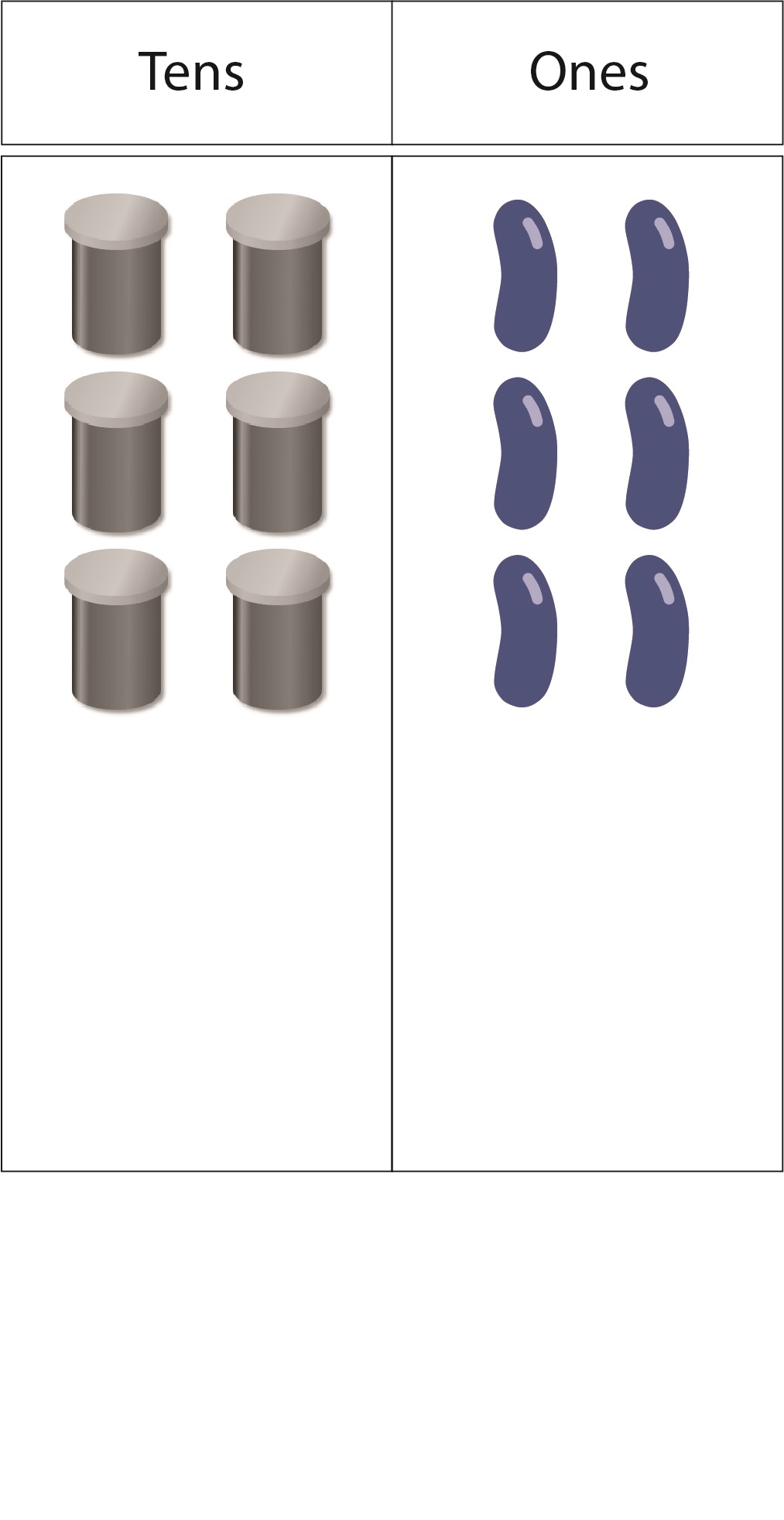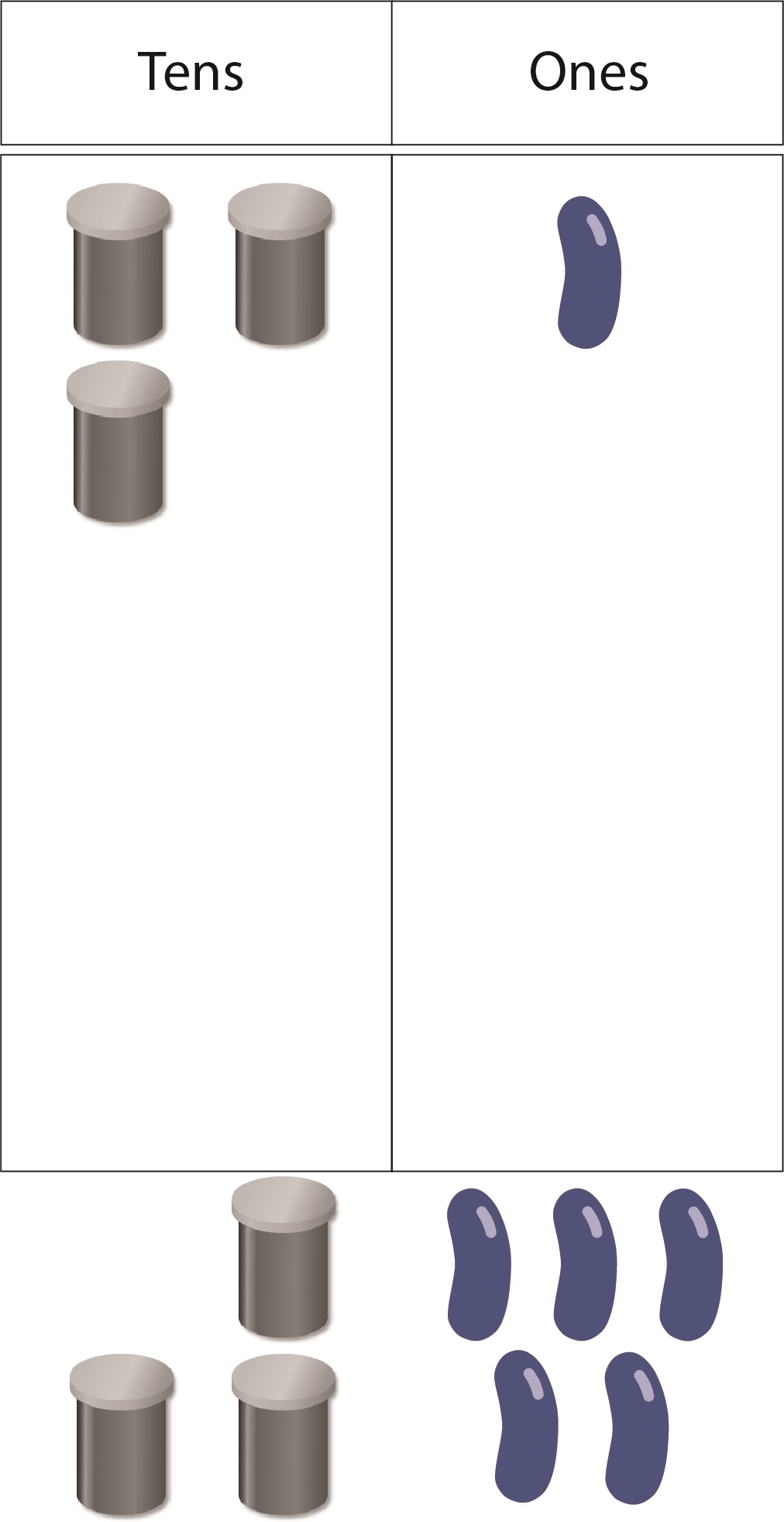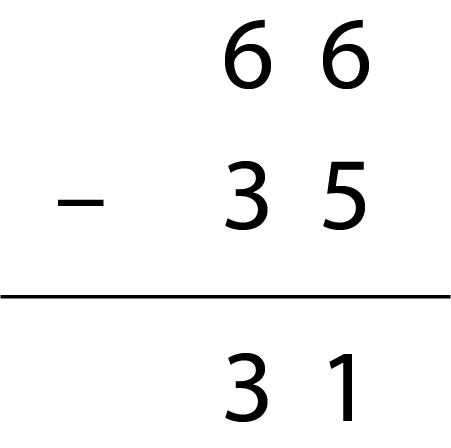The purpose of this activity is to support students in learning to apply their knowledge of basic facts and place value to solve subtraction problems with two-digit numbers, without renaming ten ones as a ten.
- Place value materials composed of individual items grouped into tens, such as BeaNZ in film canisters, ice block sticks bundled with rubber bands (hundreds with hair ties), or a paper form such as Place Value People. Bundled materials are important as they allow partitioning and combining without the need for “trading” tens blocks for ones, or vice versa.
- A place value board. This allows for the organisation of materials into columns and, in turn, supports calculation strategies. Three-column and four-column place value boards are available here.
The examples below use images of BeaNZ and canisters used to physically model the numbers. You may prefer to use ice block sticks in bundles of 10, or Place Value People. We recommend that you focus on just one of these within any given lesson.
- Pose subtraction problems, initially, with two-digit numbers that do not require renaming (i.e. the digits in each column of the starting number are larger than, or equal to, the digits in the number being subtracted). Set up a physical model, model the calculation using the materials, and record the calculation vertically.
You have 66 beans and I take away 35 of your beans.
How many beans do you have now?
I am going to write the equation vertically. I am making sure to line up the tens and ones columns. This helps me to see how many tens and ones I am subtracting


- Let students solve the problem with materials. Encourage them to verbalise their thinking with a partner, as they work, and provide time for them to share their ideas with the wider classroom. You might model this by “thinking aloud”.
- Ask questions focused on the structure of the multiples of ten to support your students.
What do you notice about 66? How many tens are in 66? How many extra ones are there?
How many tens make 35? How many extra ones are there?
If you subtract 3 tens from 6 tens, how many tens do you have?
If you subtract 5 ones from 6 ones how many ones do you have?
What is the number for 3 tens and 1 one?
- Emphasise the connection between tens and ones, as different units, that can be partitioned separately in the process of subtracting a whole two-digit number. For example,
66 and 35 are made up of tens and ones. I can make the numbers with materials (refer to the place value board) and see the different tens and ones in each number. I can subtract all of the tens to make 30 (demonstrate this using materials) and I can subtract all of the ones to make 1 (demonstrate this using materials). Now I have subtracted all of the tens and ones, I can see the total answer to 66 - 35. It is 30 + 1, 31.
- Pose further subtraction problems to encourage the development of fluency in subtracting two-digit numbers without renaming. As students progress, refine their use of the written algorithm so the use of partial addends is not required.

Next steps
- Pose further subtraction problems with two-digit numbers, that do not involve the renaming of ten ones as a ten, and are set in real-world contexts. Choose realistic contexts appropriate to your students, and encourage students to relate the problem back to the equipment if necessary. For example, “the movie is 96 minutes long. If you have been watching for 53 minutes, how long is left to watch?”
- Increase the level of abstraction by covering the materials, asking anticipatory questions, and increasing students’ use of the vertical written algorithm, whilst decreasing their use of materials.
- Extend the problems to include subtraction with three-digit numbers where renaming is not needed. Use more structured materials like place value blocks to work with three-digit numbers. A suggested sequence for extending the difficulty of the additions and subtractions is:
- Subtracting two-digit numbers without renaming (e.g. 90 - 40)
- Subtracting three-digit multiples of ten without renaming (e.g. 180 - 90)
- Adding three-digit numbers without renaming (e.g. 234 + 504).